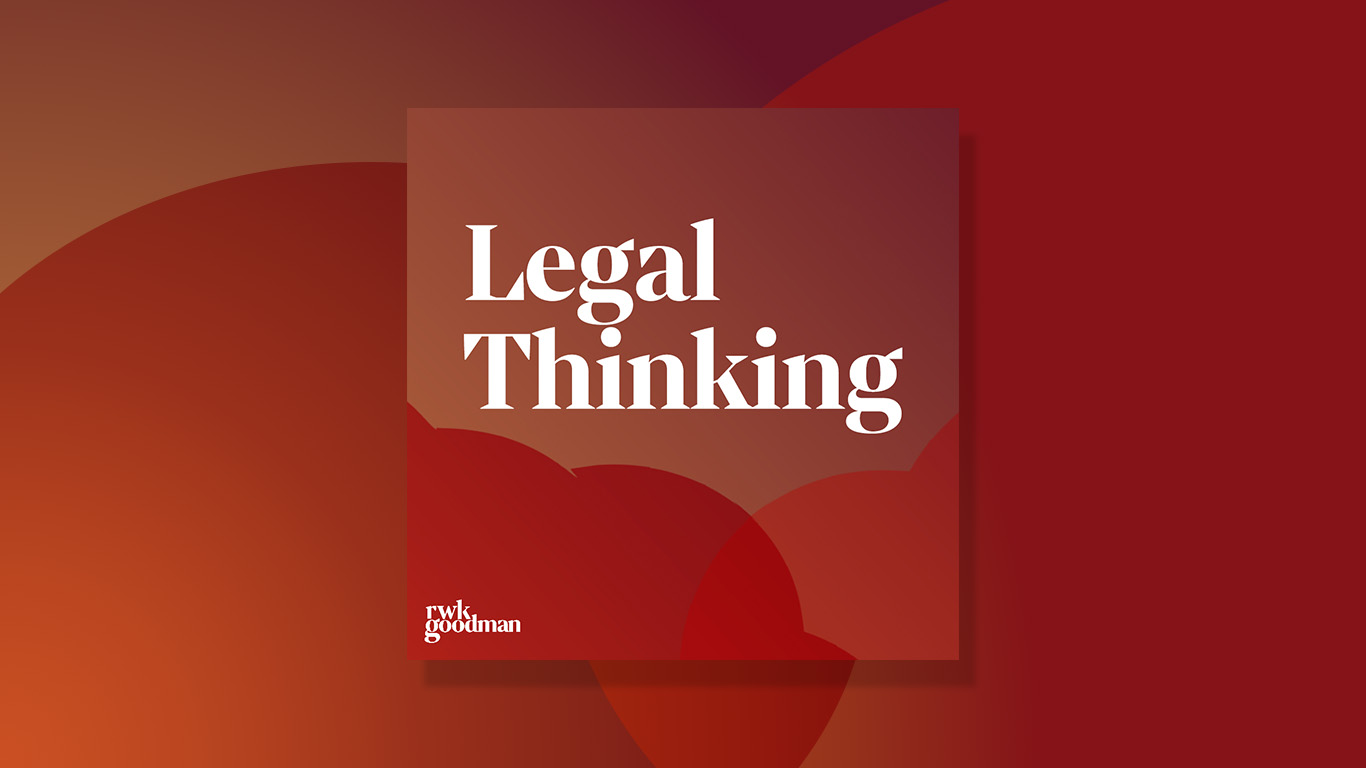Avoiding Discrimination when Recruiting

The duties of an employer not to discriminate against, victimise or harass a person are not confined to those purely in employment but extends to cover a wide category of relationships within the employment context, including job applicants.
The Equality Act 2010 is clear that an employer must not discriminate against or victimise a person:
- In the arrangements it makes for deciding who to offer employment.
- As to the terms on which it offers the person employment.
- By not offering the person employment.
Notwithstanding this, a 2021 study found that 34% of people in the UK felt they had been discriminated against when applying for a job.[1]
[1] Ciphr (2021) Workplace Discrimination in 2021 – UK Statistics and Figures
What are the sources of discrimination in recruitment?
Discrimination in recruitment typically originates from two sources. The first, an employer’s policies, criteria and practices used in the recruitment process, that is the ‘arrangements’ it makes in deciding who to offer employment. The second, and intertwined throughout the recruitment process, the hiring team’s unconscious bias.
Unconscious bias is a bias which you are unaware of and happens outside of your control, but which happens automatically due to your background, cultural environment and personal life. For example, unconscious bias may occur where a hiring manager reviews a candidate’s CV and upon seeing they graduated from Cambridge University, automatically assumes they will excel at the job, or where a hiring manager favours male candidates over female candidates even though they have similar skills and experiences.
Aside from avoiding the legal risks of an Employment Tribunal claim, organisations who actively prioritise diversity in the workforce see a 19% increase in revenue,[1] creativity and innovation enhanced by 20%,[2] and a workforce who make better decisions 87% of the time and make them twice as fast.[3]
Avoiding discrimination in recruitment therefore should be seen by employers as a strategic priority benefitting an organisation’s reputation, workforce morale and ultimately, the bottom line.
[1] Deloitte (2018) The diversity and inclusion revolution: Eight powerful truths
[2] Cloverpop (2017) White Paper: Hacking Diversity with Inclusive Decision-Making
[3] Cloverpop (2017) White Paper: Hacking Diversity with Inclusive Decision-Making
Arrangements in deciding who to offer employment
What constitutes ‘arrangements’ for the purposes of deciding who to offer employment is construed widely, and encompasses job descriptions, advertisements, the application process, the interview stage and the way in which applicants are informed they are either successful or unsuccessful. Employers are advised to undertake a risk assessment of their current recruitment practices to identify where discrimination and bias may occur and crucially, how they will combat this.
Job Descriptions
When preparing job descriptions, employers should carefully review the requirements of the role to ensure that each requirement can be objectively justified. For example, if a role could legitimately be undertaken either full-time, part-time or via a job-sharing arrangement, this should be explicitly stated. If an employer were to describe a role as full-time only, it could discriminate against women on the basis women typically have greater childcare and domestic responsibilities than men and may be deterred from applying for a full-time role.
Employers should also be wary of using language and excessive listing criteria that may deter those with a protected characteristic from applying for the role. For example, a description for a software engineer which states applicants must be “young and enthusiastic”, may amount to direct age discrimination and would deter older candidates, from applying.
Job Advertisements
Protection for job applicants under the Equality Act is not limited to those who have actually applied for the job in question, but also applies to those who have not applied for the role. In these circumstances, a claim is likely to be based on the way in which the job is advertised.
In terms of promoting vacancies, employers should publish job advertisements in a range of locations to attract a cross-section of applicants. A role advertised exclusively in women’s magazines for example is unlikely to attract a diverse array of candidates. Whilst it may be usual practice for an employer to advertise internally, there is a risk that if a workforce is drawn largely from one specific group, anyone outside of this group may be disadvantaged (which could discriminate against certain protected characteristics), and the workforce will be less diverse.
Consideration should also be given to ensuring that those absent from work, for example those on maternity leave or long-term sickness absence, are informed of any vacancies in the event they wish to apply.
Unconscious Bias Training
Each stage of the recruitment process presents an opportunity for bias and discrimination to occur. Whilst you cannot train people not to be unconsciously biased, employers should ensure that staff involved in hiring others have appropriate training to acknowledge their own unconscious biases and how they may influence their decision-making. Being aware of one’s unconscious bias can help those in the hiring team to check their own prejudices and focus on assessing an applicant’s suitability, objectively.
Reasonable Adjustments
An employer’s duty to make reasonable adjustments for those with a disability extends to the recruitment process and as such employers may need to amend the recruitment process to discharge this duty. What will be appropriate will depend on the applicant’s impairment but could include providing information in accessible formats, for example, by audio or in large print or accepting applications via an alternative means, for example by email instead of an online portal.
Employers should also try to be flexible when making arrangements for interviews. Employers should also consider whether certain groups with a protected characteristic may be disadvantaged, for example, whether a disabled applicant is able to physically access the interview venue, or whether those practising a certain religion may find it difficult to attend an interview at a certain time.
Application Process
When reviewing applications, employers can reduce the risk of unconscious bias and discrimination by recruiting ‘blind’. This involves the removal of any identifying factors from a person’s application, including their name, date of birth, photo and sex. This approach reduces the risk of the hiring team being influenced, whether positively or negatively, by an applicant’s protected characteristic and ensures applicants are assessed exclusively on their suitability for the job.
When shortlisting applicants, it is best practice for employers to ensure there is always more than one person involved in the process to minimise the risk of one individual’s bias prejudicing the decision-making. A standard marking matrix should be utilised and applied to all applicants consistently.
Interview Stage
During the interview stage, employers should adopt a standard set of questions for all candidates. Standardisation of this part of the process ensures employers are able to assess the candidate’s suitability for the role objectively.
Following the interview, the hiring team should finalise their scores and record their feedback independently, prior to discussing the applicant’s suitability with others.
When is a health question permitted as part of the recruitment process?
Despite 1 in 5 of the working-age population being classified as disabled,[1] a recent study found 24% of employers would be less likely to employ someone with a disability.[2] Naturally, many disabled applicants are wary of applying for jobs that seek to question their health/disability for fear it may hinder their prospects of success.
Other than in prescribed circumstances, it is unlawful for employers to ask job applicants about their health or disability prior to the applicant either:
- being offered a job (on a conditional or unconditional basis); or
- being included in a pool of successful applicants to be offered a job when a position becomes available.
There are however exceptions to this general rule. One such example is where a job requires a specific occupational requirement. For example, if an employer wanted to recruit a deafblind project manager who has personal experience of deafblindness, they would be permitted to ask about an applicant’s disability, either on an application form or at interview. Another example is where enquiries about a person’s disability or health are necessary to establish that person’s ability to perform a function which is intrinsic to the role. For example, where a construction company recruits scaffolders, it would be lawful to ask about an applicant’s disability or health if it related specifically to that person’s ability to climb scaffolding. Other exceptions include for monitoring purposes, for example monitoring the diversity of applicants and for ascertaining what reasonable adjustments may be necessary for an applicant to take part in the recruitment process.
Aside from the limited exceptions, it is best practice for employers to refrain from asking applicants, either directly or indirectly, about their health or disability. This includes questions relating to sickness absence. Where an applicant voluntarily discloses information relating to their disability or health, employers should be cautious in ensuring their responses are within the parameters of the identified exceptions, i.e., their responses are relevant to assess whether an applicant’s disability fulfils a specific occupational requirement or establishes their ability to carry out an intrinsic function of the job.
[1] Department for Work & Pensions (2022): The employment of disabled people 2021
[2] Leonard Cheshire (2019) Reimagining the workplace: disability and inclusive employment
Offering the job
Once a decision has been made on who to offer employment to, employers should ensure they give clear reasons to the unsuccessful applicants outlining why they were not selected for the role. As well as providing a clear internal record, accurate records are key if an employer needs to justify their decision in an Employment Tribunal.
Avoiding and actively preventing discrimination in recruitment should be seen by employers as a strategic priority. Aside from minimising the legal risks, the advantages of a diverse workforce are clear. Ultimately, adapting recruitment processes to actively reduce the risk of bias and discrimination will result in fairer, and often better, hiring decisions.







